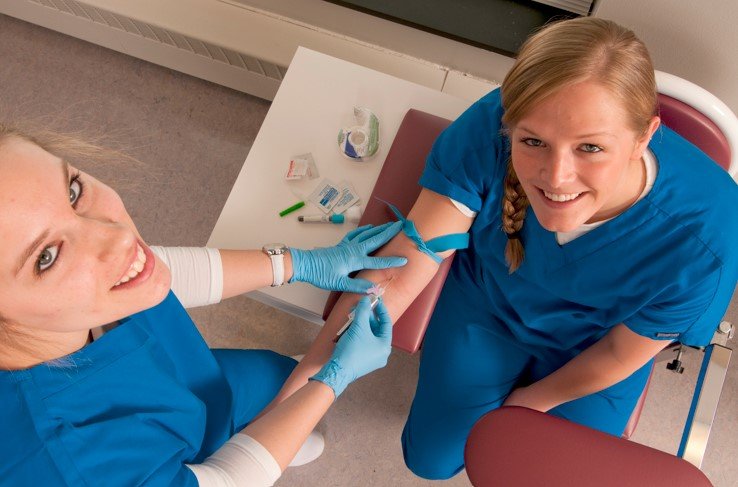Impact of Medical Device Reimbursement Policies on Hospital Supply and Equipment Management: Strategies for Adaptation and Innovation
Summary
- Changes in medical device Reimbursement policies under the ACA have led to shifts in hospital supply and equipment management strategies.
- Hospitals are now focusing on cost-effective solutions while still maintaining high-quality patient care.
- The medical device industry is adapting to the new policies by offering innovative technologies and services to meet the changing needs of hospitals.
Introduction
Medical device Reimbursement policies under the Affordable Care Act (ACA) have had a significant impact on hospital supply and equipment management in the United States. These changes have forced hospitals to reevaluate their procurement strategies and look for cost-effective solutions while maintaining high standards of patient care. In this blog post, we will explore the effects of these policies on hospitals and the medical device industry, as well as the strategies being implemented to adapt to the new landscape.
Impact on Hospital Supply and Equipment Management
The changes in medical device Reimbursement policies under the ACA have necessitated hospitals to rethink their supply and equipment management strategies. Some of the key impacts include:
Cost Considerations
Hospitals are now under pressure to reduce costs while improving patient outcomes. This has led to a shift towards value-based purchasing, where hospitals prioritize cost-effective solutions that provide the best outcomes for patients. Medical device procurement is now more scrutinized, with hospitals looking for products that offer the best value for money.
Standardization
Standardizing medical devices across hospital networks has become a common practice as a way to streamline procurement processes and reduce costs. By standardizing products, hospitals can benefit from volume discounts and ensure consistency in patient care. This approach also allows for better inventory management and reduces the risk of product variation.
Data-driven Decision Making
Hospitals are increasingly relying on data analytics to make informed decisions about their supply and equipment management. By analyzing usage patterns, costs, and outcomes, hospitals can identify areas for improvement and optimize their procurement processes. This data-driven approach helps hospitals make more strategic decisions that benefit both patients and the organization as a whole.
Adaptation in the Medical Device Industry
The medical device industry has also had to adapt to the changing landscape of medical device Reimbursement policies under the ACA. Some of the key adaptations include:
Focus on Innovation
With hospitals looking for cost-effective solutions, medical device manufacturers are focusing on innovation to meet the changing needs of the market. Companies are investing in research and development to create products that offer better outcomes at a lower cost. This focus on innovation has led to the development of new technologies and services that improve patient care while reducing overall Healthcare Costs.
Collaboration with Hospitals
Medical device manufacturers are increasingly collaborating with hospitals to develop customized solutions that meet the specific needs of Healthcare Providers. By working closely with hospitals, manufacturers can better understand their challenges and develop products that address these issues. This collaboration has led to the creation of tailored solutions that improve efficiency, reduce costs, and enhance patient outcomes.
Educational Initiatives
To help hospitals navigate the changing landscape of medical device Reimbursement policies, manufacturers are offering educational initiatives to inform Healthcare Providers about new products and technologies. These initiatives provide hospitals with the knowledge and tools needed to make informed decisions about their supply and equipment management. By educating Healthcare Providers, manufacturers can ensure that hospitals are equipped to adapt to the evolving healthcare environment.
Conclusion
The changes in medical device Reimbursement policies under the ACA have had a significant impact on hospital supply and equipment management in the United States. Hospitals are now focusing on cost-effective solutions while still maintaining high-quality patient care. The medical device industry is adapting to the new policies by offering innovative technologies and services to meet the changing needs of hospitals. By working together, hospitals and manufacturers can navigate these changes and continue to provide the best possible care for patients.

Disclaimer: The content provided on this blog is for informational purposes only, reflecting the personal opinions and insights of the author(s) on the topics. The information provided should not be used for diagnosing or treating a health problem or disease, and those seeking personal medical advice should consult with a licensed physician. Always seek the advice of your doctor or other qualified health provider regarding a medical condition. Never disregard professional medical advice or delay in seeking it because of something you have read on this website. If you think you may have a medical emergency, call 911 or go to the nearest emergency room immediately. No physician-patient relationship is created by this web site or its use. No contributors to this web site make any representations, express or implied, with respect to the information provided herein or to its use. While we strive to share accurate and up-to-date information, we cannot guarantee the completeness, reliability, or accuracy of the content. The blog may also include links to external websites and resources for the convenience of our readers. Please note that linking to other sites does not imply endorsement of their content, practices, or services by us. Readers should use their discretion and judgment while exploring any external links and resources mentioned on this blog.

